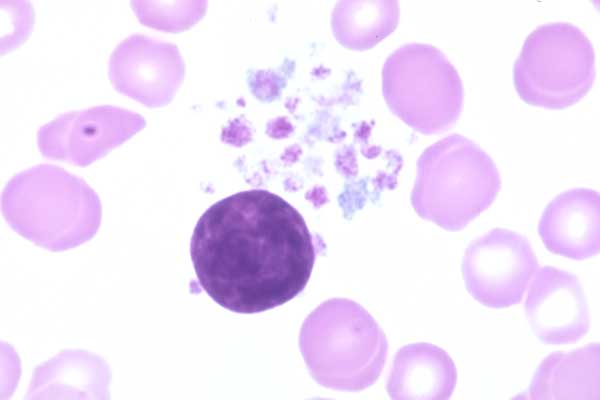Myelofibrosis - definition, treatment and symptoms

What is Myelofibrosis and Definition
Myelofibrosis is a chronic, degenerative condition of the BONE MARROW in which fibrous tissue replaces the red BONE marrow. Researchers do not know what causes myelofibrosis, which typically develops in people between the ages of 50 and 70, but believe it is an autoimmune response from a single defective blood STEM CELL (called a clonal dysfunction). The IMMUNE SYSTEM fails to recognize the deformed cells and produces antibodies to attack them. Because all BLOOD cells originate from BLOOD STEM CELLS, the attacking antibodies cause extensive damage within the bone marrow. The body’s efforts to repair this damage result in pervasive SCAR formation that progressively shuts down the bone marrow.
Symptoms of Myelofibrosis
The most apparent consequence is severe ANEMIA, as 99 percent of the bone marrow’s production is oxygen-bearing erythrocytes (red blood cells). The shortfall activates the body’s reserve erythropoietic functions in the LIVER and the SPLEEN, which begin producing erythrocytes. However, these organs cannot meet the demand and so both begin to enlarge with the effort (HEPATOMEGALY and SPLENOMEGALY, respectively). Symptoms of myelofibrosis include those of anemia as well as bone PAIN, easy bleeding, and low resistance to infection as a consequence of diminished LEUKOCYTE (white blood cell) production. Blood tests show a low ERYTHROCYTE count, often low leukocyte and PLATELET counts, and characteristic “tear drop” deformity of the erythrocytes. Bone marrow biopsy shows the infiltration of fibrous tissue.
Myelofibrosis Treatment
Treatment targets boosting the blood’s erythrocytes by BLOOD TRANSFUSION and ERYTHROPOIETIN (EPO) supplementation to stimulate the remaining red bone marrow to increase its erythrocyte production (erythropoiesis). Occasionally CHEMOTHERAPY and RADIATION THERAPY to suppress bone marrow function, curtailing proliferation of the defective stem cells, slows the condition’s progression. BONE MARROW TRANSPLANTATION is sometimes a viable option. The outlook for myelofibrosis is variable; treatment is not curative and ultimately the bone marrow fails completely. Occasionally myelofibrosis evolves into acute myeloid LEUKEMIA, a rapidly progressive type of cancer in which blast cells (immature leukocytes) take over the bone marrow.
See also POLYCYTHEMIA VERA; THROMBOCYTHEMIA; THROMBOCYTOPENIA.
Open discussion on the topic Myelofibrosis - definition, treatment and symptoms
Similar interests
- Nuovi Casino
- Casinos Not On Gamstop
- UK Casinos Not On Gamstop
- Casinos Not On Gamstop
- UK Casinos Not On Gamstop
- Casino Non Aams Italia
- Slot Sites Not On Gamstop
- Meilleur Casino En Ligne
- Non Gamstop Casino Sites UK
- Meilleur Casino En Ligne
- Casino En Ligne France
- Best Non Gamstop Casinos
- Casinos Not On Gamstop
- UK Casino Not On Gamstop
- Casinos Not Signed Up To Gamstop
- Best Slot Sites UK
- Non Gamstop Casino Sites UK
- Online Casinos Nederland
- Online Casinos Nederland
- Casinos Not On Gamstop
- Best New Uk Casinos Not On Gamstop
- Casino Non Aams
- Non Gamstop Casinos UK
- Migliori Siti Casino Non Aams
- Bitcoin Casinos
- Sites De Paris Sportifs Belgique
- Bookmaker Non Aams
- Casino En Ligne